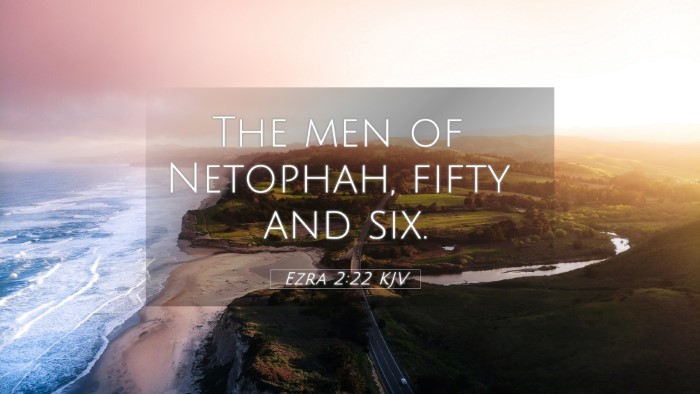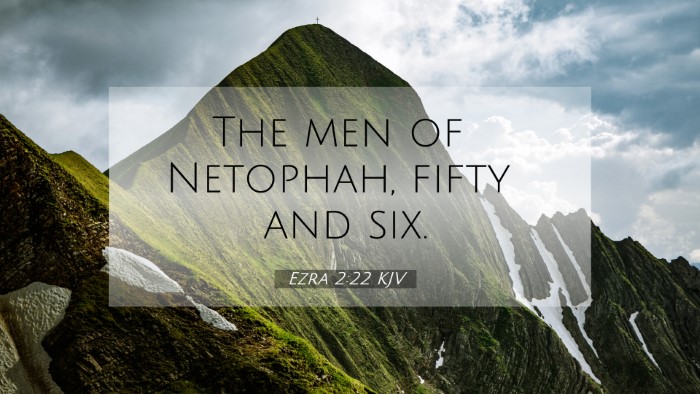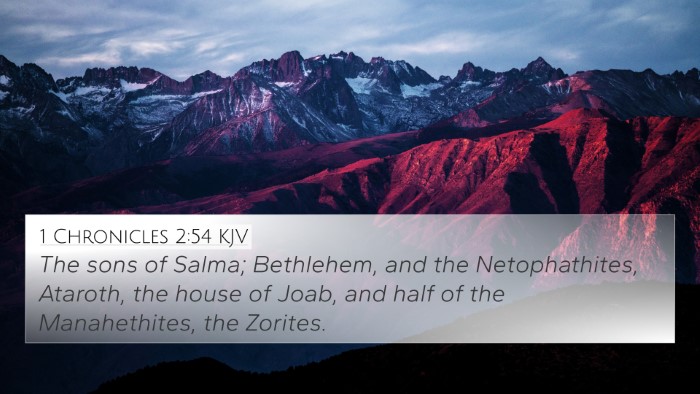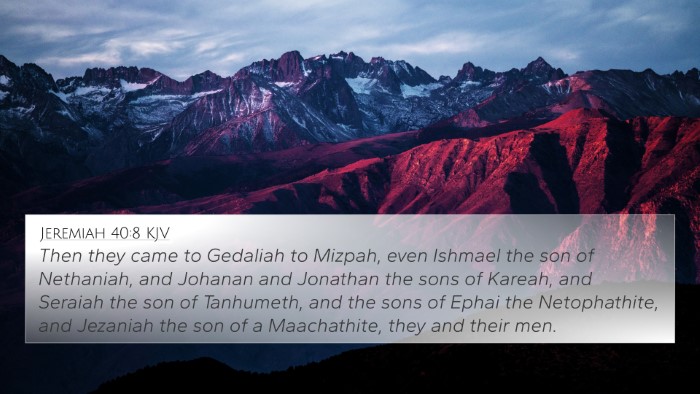Understanding Ezra 2:22
Verse Reference: Ezra 2:22
This verse states: "The children of Delaiah, the children of Tobiah, the children of Nakoda, six hundred fifty and two." It provides a numerical account of the people returning from exile, specifically the descendants of Delaiah, Tobiah, and Nakoda, contributing to the larger narrative of the restoration of Israel.
Summarized Insights from Public Domain Commentaries
Matthew Henry's Commentary
Matthew Henry highlights the importance of names in the genealogies and their significance in establishing identity and inheritance. The listing of these families denotes not only a continuity of lineage but also a fulfillment of God’s promise to restore His people to their homeland. Each name represents families who contributed to the community's revival after the Babylonian exile.
Albert Barnes' Notes
Albert Barnes expounds on the significance of the numbers given in Ezra 2:22, indicating that the number of 652 signifies a substantial return from exile. This number reflects not just individuals, but families that carried the weight of heritage and religious responsibilities. The mention of specific families emphasizes the organized structure of the returning community and the importance of maintaining family lines as they rebuild their nation.
Adam Clarke's Commentary
Adam Clarke notes that the families recorded in this verse are part of a larger group that returned to Jerusalem. He points out that these records are vital both for historical accuracy and for theological understanding, as they illustrate God's faithfulness in restoring His people. Clarke emphasizes that the specific mention of families and their numbers offers insight into the demographic and social aspects of the post-exilic community.
Bible Verse Cross-References
Ezra 2:22 is intricately linked with various other scriptures. Here are several notable references that enhance our understanding of this verse:
- Nehemiah 7:21: Similar listing of returnees highlighting family names.
- Jeremiah 29:10: God's promise to restore Israel after a period of captivity.
- Ezra 1:5: The call to return from exile, which sets the stage for Ezra 2.
- Isaiah 44:28: The prophecy concerning Cyrus, who facilitated the return.
- Haggai 1:1-2: The encouragement to rebuild the temple resonates with the community's efforts reflected in Ezra.
- Zechariah 1:12-17: God's concern for Jerusalem and His people, linking the spiritual significance of the return.
- Psalm 126:1: The joy of returning from captivity, expressing the emotional backdrop to the physical return.
Thematic Connections
The themes of restoration and community are prevalent throughout the verses in Ezra and its cross-references:
- Restoration of identity: Ezra 2:22 demonstrates the journey of reclaiming heritage through the listing of names.
- Fulfillment of prophecy: Connections such as Jeremiah's promise link the return to God’s overarching plans.
- Community organization: The structured listing of families indicates an intentional rebuilding effort both socially and physically.
- The role of leadership in restoration: Leaders like Ezra and Nehemiah play pivotal roles in guiding the returning exiles, as seen in Nehemiah 7 and Haggai 1.
Tools for Bible Cross-Referencing
For further study, employing tools for cross-referencing can significantly enhance understanding:
- Bible Concordance: Helps locate verses and their connections.
- Bible Cross-Reference Guide: Provides a systematic approach to scripture linkage.
- Cross-Reference Bible Study: Useful in detailed exploratory studies of biblical themes.
- Comprehensive Bible Cross-Reference Materials: Gathering resources for in-depth thematic studies can be beneficial.
Using Bible Cross-References Effectively
To effectively utilize cross-references, one might consider:
- Understanding thematic links: Recognize how different verses connect through overarching themes.
- Identifying connections between Old and New Testament: Such connections deepen the understanding of God’s unchanging nature.
- Detailed cross-reference between Gospels: A comparative approach can illuminate shared teachings and narratives.
Conclusion
In summary, Ezra 2:22 serves as a critical piece of the narrative of the Israelites' return from exile, emphasizing restoration, community, and divine faithfulness. Cross-referencing this verse with other scriptures enhances our understanding of the continuity and coherence in the biblical narrative.
By employing tools and methods for cross-referencing, one can develop a comprehensive understanding of the connections between scriptures, the importance of familial and community roles in biblical history, and the themes of restoration that run throughout the Bible.






